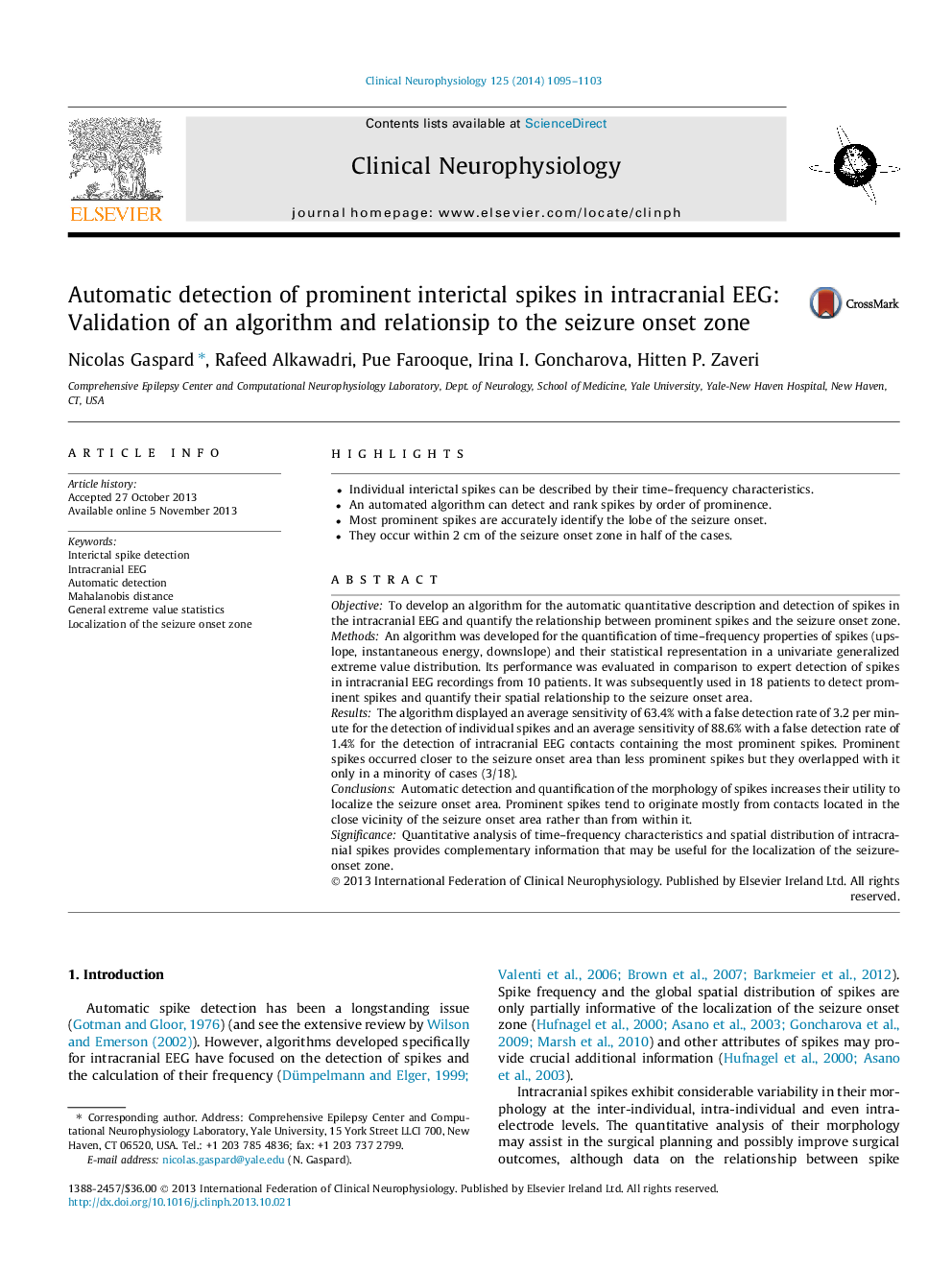| Article ID | Journal | Published Year | Pages | File Type |
|---|---|---|---|---|
| 6008509 | Clinical Neurophysiology | 2014 | 9 Pages |
â¢Individual interictal spikes can be described by their time-frequency characteristics.â¢An automated algorithm can detect and rank spikes by order of prominence.â¢Most prominent spikes are accurately identify the lobe of the seizure onset.â¢They occur within 2 cm of the seizure onset zone in half of the cases.
ObjectiveTo develop an algorithm for the automatic quantitative description and detection of spikes in the intracranial EEG and quantify the relationship between prominent spikes and the seizure onset zone.MethodsAn algorithm was developed for the quantification of time-frequency properties of spikes (upslope, instantaneous energy, downslope) and their statistical representation in a univariate generalized extreme value distribution. Its performance was evaluated in comparison to expert detection of spikes in intracranial EEG recordings from 10 patients. It was subsequently used in 18 patients to detect prominent spikes and quantify their spatial relationship to the seizure onset area.ResultsThe algorithm displayed an average sensitivity of 63.4% with a false detection rate of 3.2 per minute for the detection of individual spikes and an average sensitivity of 88.6% with a false detection rate of 1.4% for the detection of intracranial EEG contacts containing the most prominent spikes. Prominent spikes occurred closer to the seizure onset area than less prominent spikes but they overlapped with it only in a minority of cases (3/18).ConclusionsAutomatic detection and quantification of the morphology of spikes increases their utility to localize the seizure onset area. Prominent spikes tend to originate mostly from contacts located in the close vicinity of the seizure onset area rather than from within it.SignificanceQuantitative analysis of time-frequency characteristics and spatial distribution of intracranial spikes provides complementary information that may be useful for the localization of the seizure-onset zone.
